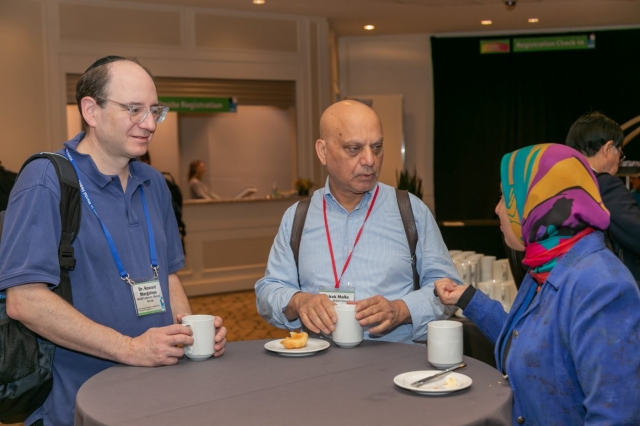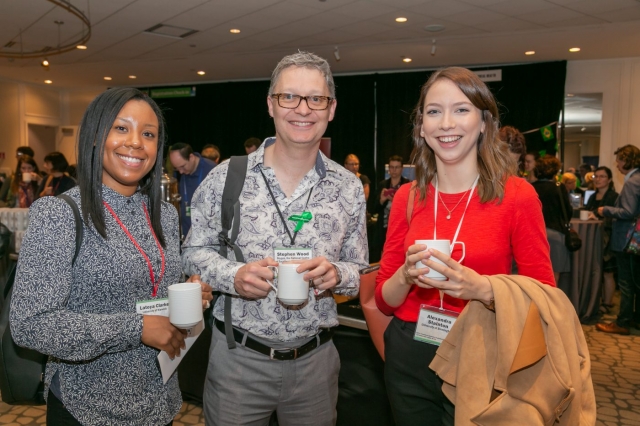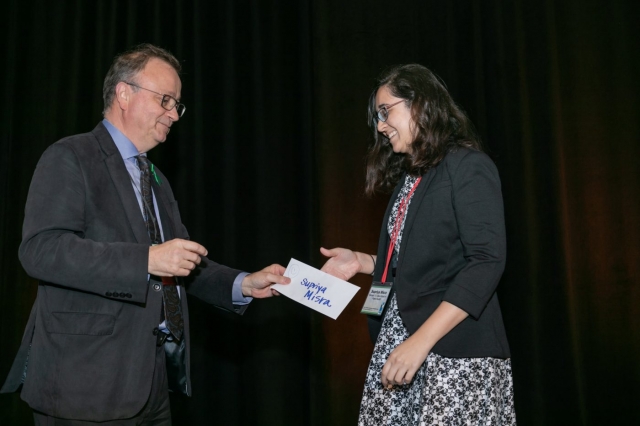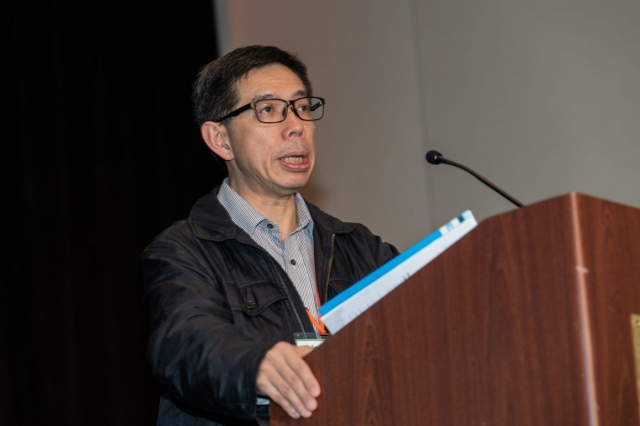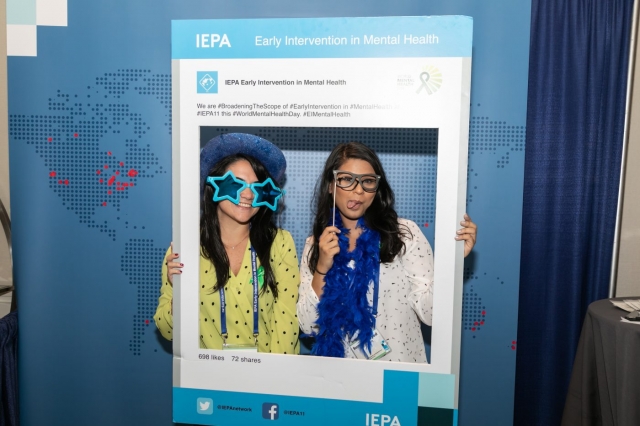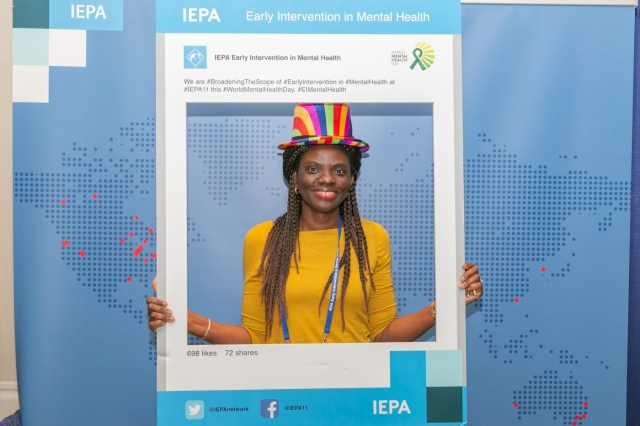October 11, 2018
Posted by:
IEPA
By IEPA.
The final day of IEPA coincided with World Mental Health Day, with this year’s theme particularly relevant to the mission of IEPA. ‘Young people and mental health in a changing world’ draws attention to the challenges that young people face with their mental health and wellbeing.
As the world changes (seemingly faster and faster) and the mental health of young people changes, it’s worthwhile to reflect on what the early intervention field is doing to keep up. How is our approach to caring for young people changing, and where is it headed?
Today provided much food for thought in this regard, ranging from new directions in genomics to changing criteria for identifying at-risk young people.
But first, a special mention must go to Tunefoolery, a Boston group of musicians with lived experience of mental illness who have created their own place of healing, recovery, and support through music. They performed at various events throughout IEPA 11, their music greeting bleary-eyed conference attendees every morning as they settled in for the plenary sessions.
To begin Day 3, Steven Hyman gave an overview of how large-scale genetics is finally starting to provide possibilities for early detection and prevention in schizophrenia.
Unlike Alzheimer’s disease, clear biomarkers for psychosis have eluded researchers. But advances in genomics are unearthing genetic profiles that might predict the the risk of psychotic disorders such as schizophrenia. Polygenetic risk scores (PRS) can give a probable risk of developing psychosis – but only if you’re of European descent. Steven highlighted there is therefore an urgent need to address the lack of diversity in psychiatric genetics.
We may even one day be able to determine which particular types of brain cell are involved in the pathogenesis of psychosis, which could allow much more targeted therapeutics than the drugs we have now. But ultimately, what Steven and others hope for is to find clear biomarkers for schizophrenia that would allow preventative interventions before symptoms have even manifested.
Next, John Kane presented findings and thoughts based on the landmark RAISE study. Implementing early intervention services at 34 sites across the US, RAISE has transformed the mental health landscape of the country. Results from the trial show early intervention to be effective across a range of domains. However, there was no difference between treatment arms and hospitalisation rates.
One predictor of hospitalisation in RAISE was attitudes towards medication, and John used this to ask whether we need a change in attitudes to psychopharmacology. He argued that we need to destigmatise non-adherence, saying it’s not a failing, but human nature. Further, we need to change the way we view treatment options such as long-acting antipsychotics and clozapine, a drug he pointed out can be ‘life-changing’ for some people.
The final plenary addressed one of the trending topics of IEPA this year – trauma. Helen Fisher gave an overview of childhood trauma and mental health, asking, while it’s known that childhood trauma is linked to poor mental health later on, what makes trauma traumatic?
Answers ranged from the psychosocial to the biological, and included proximity, frequency, and duration, cultural norms, age and gender. As to the relationship between trauma and mental illness, particular types of trauma are associated with different disorders – and there is a dose-response effect. There does seem to be a genetic component, but Helen stressed that evidence is pretty inconsistent and more work is needed in this area.
But perhaps a better question from a preventative point of view is, what makes trauma not traumatic? Higher cognitive function, a happy childhood, a cohesive community and, in adolescence, physical activity all protect against the negative mental health effects of trauma. Helen, therefore, suggested we start looking to these answers to design future interventions.
In the first session after lunch, Symposium 25 looked ahead to the next IEPA (to be held in Rio de Janeiro!) and the next generation of early intervention services. The question of diversity in study populations has come up several times at the conference this year, so it was good to hear researchers from Japan, Singapore, Korea, and Brazil discuss their experiences of implementing early intervention programs locally.
Translating models of early intervention that have been developed in countries with different resourcing or cultural contexts posed its challenges. Recruitment and finding trained clinicians was difficult, as were different cultural attitudes towards mental health, psychosis in particular. Nonetheless, these groups have successfully adapted models of early intervention into their local contexts, and made significant contributions to early intervention research.
Last, but not least, Symposium 28 brought us back to the conference theme of broadening the scope, looking at transdiagnostic approaches to distinguish between psychopathologies in young people. Early on, diagnoses tend to ‘jump around,’ as Barnaby Nelson put it. If we are to intervene early, do we need to recognise the early stages of specific disorders – and can we?
Results presented seem to say we can, with data from the Netherlands suggesting clusters of symptoms can help identify later severity, and that particular types of early warning signs can predict specific symptom domains.
The CHARMS study in Melbourne is asking if it’s possible to recognise which young people in at-risk mental states (which often overlap between disorders) will transition to full-threshold disorder. And the BeMIND study found that everyday patterns of behavior and mood can predict depression and anxiety.
IEPA 11 finished with the closing ceremony, where we met the future leaders of IEPA and several people were recognised for their work.
Congratulations to the following:
Best posters:
Day 1 – Oyedeji Ayonrinde
Day 2 – Daniel DeVoe
Day 3 – Supriya Misra
The winners of the Future Leader Award:
Al Powers and Jai Shah, both clinical academics with broad scopes in their research.
Peter Jones again paid tribute to Larry Seidman and to Matcheri Keshavan and Kristen Woodberry for stepping up to convene IEPA 11 in Boston. He then handed over to the incoming president, Lucia Valmaggia to introduce Rodrigo Bressan, who had the “difficult” task of selling Rio de Janeiro to the audience for IEPA 12, which will explore New Frontiers in Early Intervention.
And that’s a wrap! It’s been a jam-packed few days, with intense, wide-ranging and thoughtful discussion about where early intervention is heading, the importance of context (whether it’s cultural or individual), ongoing recognition of the critical place people with lived experience have in both treatment and research – and a whole lot more.
IEPA really has broadened the scope this year – we look forward to doing it all over again in Rio!
Vejo vocês no Brasil! Te veo en Brasil! See you in Brazil!
